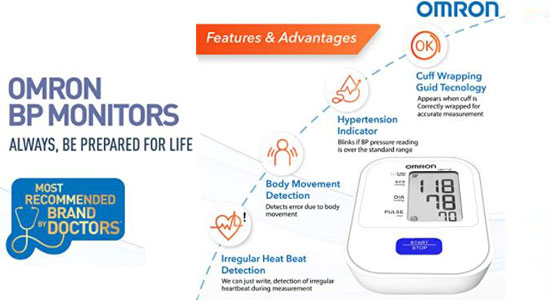Cord blood banking has gained popularity as a valuable source of stem cells for medical treatments and research. Compared to other stem cell sources, cord blood offers unique advantages that make it an increasingly preferred option. Below is an article that outlines the benefits of cord blood banking, particularly highlighting LifeCell’s role in this evolving field.
What Are The Benefits Of Cord Blood Banking Over Other Stem Cell Sources?
Stem cells have revolutionized medical treatments, offering hope for various life-threatening diseases and conditions. While stem cells can be sourced from bone marrow, peripheral blood, and even embryos, cord blood banking has become one of the most promising methods for obtaining stem cells. LifeCell, a pioneer in this field, has made cord blood banking accessible and safe for families. Here are some key advantages of cord blood banking over other stem cell sources.
1. Less Invasive & Easier Collection Process
The collection of cord blood is both painless and non-invasive for the mother and the baby. Once the umbilical cord is clamped and cut, the blood is collected from the cord without any risk to the newborn or mother. This contrasts with other stem cell sources, such as bone marrow extraction, which requires surgery and can be a painful and invasive procedure for the donor. The ease and safety of the process make cord blood an attractive option for stem cell banking.
2. More Diverse & Adaptable Stem Cells
Cord blood contains hematopoietic stem cells (HSCs), which are responsible for producing blood and immune cells. These cells are highly adaptable and versatile, making them suitable for treating over 80 diseases, including leukemia, lymphoma, and genetic disorders. In contrast to bone marrow or peripheral blood stem cells, cord blood stem cells are more primitive and have a higher ability to regenerate and differentiate into various cell types, making them more effective for certain treatments.
3. Lower Risk Of Graft-Versus-Host Disease (GVHD)
One of the significant advantages of using cord blood stem cells is the lower risk of graft-versus-host disease (GVHD), a condition where the donor’s immune cells attack the recipient’s tissues. Since cord blood cells are less mature, they are less likely to cause this complication compared to stem cells from bone marrow or peripheral blood. This lower risk of GVHD makes cord blood transplants a safer option for patients, especially those undergoing stem cell transplants for cancer treatment.
4. Immediate Availability
One of the major challenges in using bone marrow or peripheral blood stem cells is the need to find a matching donor. This process can be time-consuming and stressful for families, especially in cases where a match is not immediately available. Cord blood, however, is stored and readily available when needed. LifeCell’s cord blood banking services allow families to store their newborn’s cord blood for potential future use, ensuring immediate access in case of medical emergencies.
5. Less Stringent Matching Requirements
Stem cell transplants require a close match between the donor and the recipient. However, cord blood stem cells have less stringent matching requirements than bone marrow or peripheral blood stem cells. This flexibility increases the chances of finding a suitable match, even when the genetic match between the donor and recipient is not perfect. LifeCell’s cord blood banking offers families a higher probability of having a compatible source of stem cells for potential future treatments.
6. Higher Success Rates In Pediatric Patients
Cord blood transplants have shown to be particularly effective in pediatric patients. The stem cells from cord blood are less likely to cause complications in children, and they tend to have higher success rates in treating childhood cancers and genetic diseases. LifeCell has contributed to the successful use of cord blood stem cells in pediatric stem cell transplants, offering hope to families facing serious medical conditions.
7. Long-Term Preservation
Cord blood stem cells can be cryogenically stored for decades without losing their potency or viability. This long-term preservation ensures that stem cells remain available for use whenever they are needed. LifeCell offers advanced storage facilities that maintain the integrity of the stored cord blood, providing families with peace of mind that their stem cells are safely stored for future use.
8. Potential For Future Medical Treatments
The field of stem cell research is continuously evolving, and new therapies and treatments are being developed using stem cells. Cord blood banking offers families the opportunity to store these valuable cells for potential future treatments that may not even exist today.
9. Ethical and Controversy-Free
Unlike embryonic stem cells, which raise ethical concerns due to the destruction of embryos, cord blood stem cells are collected after birth, from the umbilical cord. This process involves no harm to the baby or the mother, making it an ethical and non-controversial source of stem cells. LifeCell adheres to ethical standards, ensuring that families can store their cord blood without any moral or ethical concerns.
LifeCell is a leading player in cord blood banking, offering comprehensive services that include collection, processing, and storage of cord blood. Their advanced technology and expertise ensure that the stem cells are collected and preserved under optimal conditions, maximizing their future use potential. Additionally, LifeCell provides families with access to their stored stem cells whenever needed, offering a sense of security and preparedness for the future.
Conclusion
Cord blood banking presents numerous benefits over other stem cell sources, particularly in its non-invasive collection process, lower risk of complications, and immediate availability. LifeCell, with its expertise and state-of-the-art technology, ensures that families can safely store their newborn’s cord blood for future medical needs. As stem cell research continues to advance, the value of cord blood banking will only increase, offering hope for treating a wide range of diseases and conditions.

Anjali is the owner of the https://indiacsr.in/ , https://businessnewsthisweek.com/ and https://www.digitalsmagazine.com/ website. Her creative ideas, passion, and enthusiasm can be seen in her articles. Keep in touch with her for more interesting and helpful articles…….









